Please Support Our Work
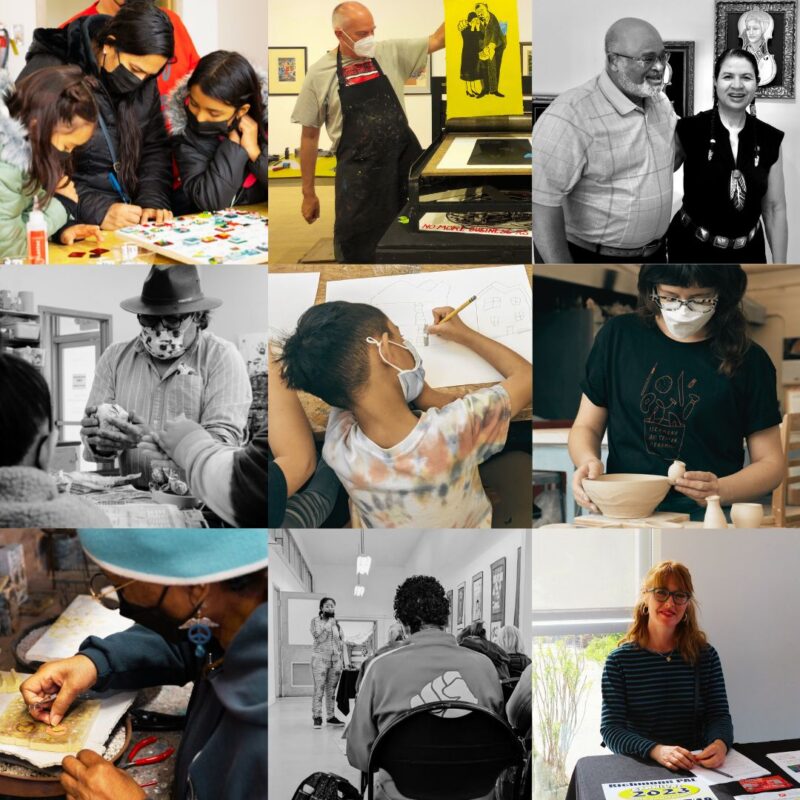
Please Support Our Work We’ve achieved a lot together in FY2022-23. Help us keep going! Over the past twelve months: Please make a donation to Richmond Art Center before the end of the fiscal year (6/30/23). Your donation – any amount – will support RAC’s free gallery admission, exhibitions, education programs, and community outreach. Thank you for your support! Donations […]
The Richmond Standard: Richmond mayor’s office also an art gallery
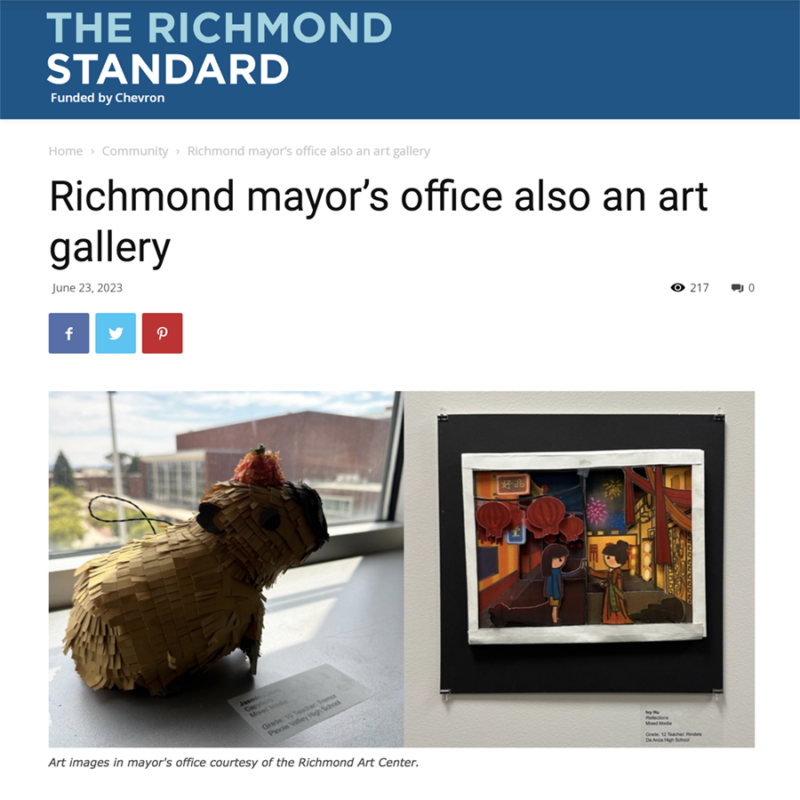
Link: https://richmondstandard.com/community/2023/06/23/richmond-mayors-office-also-an-art-gallery/ The Richmond Standard Richmond mayor’s office also an art gallery June 23, 2023 After a four years, works from locally-based NIAD Art Center are being exhibited on rotation at the office located at Richmond Civic Center, according to Mayor Eduardo Martinez. The mayor’s office also partnered with the Richmond Art Center to display […]
We need YOU… to volunteer at Richmond Art Center

VOLUNTEERS NEEDED Volunteers at Richmond Art Center assist our teachers and staff, help out at events, support community outreach, and more. If you have a passion for art, a desire to help your community, or are just looking to get more involved, fill out a volunteer application today! SUMMER EVENTS WE NEED VOLUNTEERS FOR:* * We especially need volunteers who […]
Happy Juneteenth from Richmond Art Center!
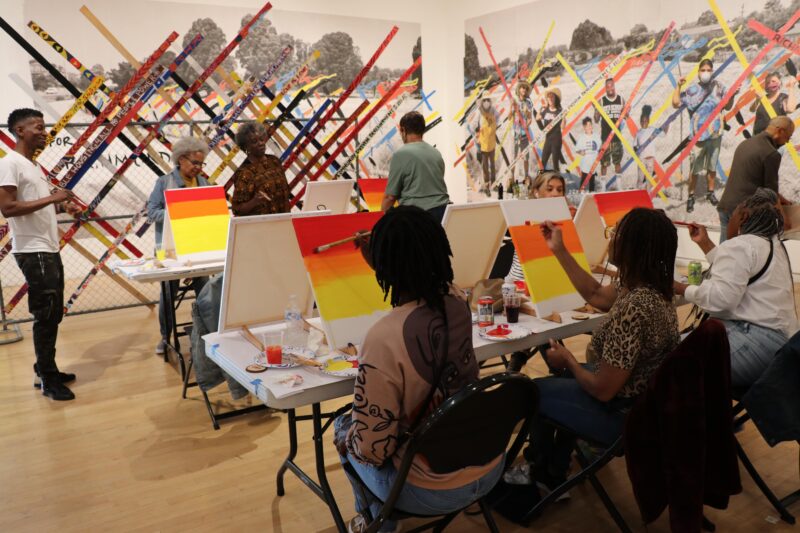
Happy Juneteenth! Wishing folk a rich and fulfilling day from everyone at Richmond Art Center Last week we celebrated Juneteenth early with a special paint and sip event at Richmond Art Center. Thirty community members gathered in the main gallery as artisan Elishes Cavness guided them through the steps to paint their own ‘black panther’ masterpiece.
Important Parking Notification for Students and Visitors to RAC during RPAL’s Juneteenth Carnival (6/13-6/19)

Important Parking Notification for Students and Visitors to Richmond Art Center during RPAL’s Juneteenth Carnival Set-Up through Deinstall: Tuesday, June 13 – Monday, June 19 Carnival Dates: Friday, June 16 – Sunday, June 18 Starting Tuesday, June 13 through Monday, June 19 the City parking lot opposite Richmond Art Center (on the 400 block of […]
WCCUSD Student Artwork Displayed in Mayor Martinez’s Office
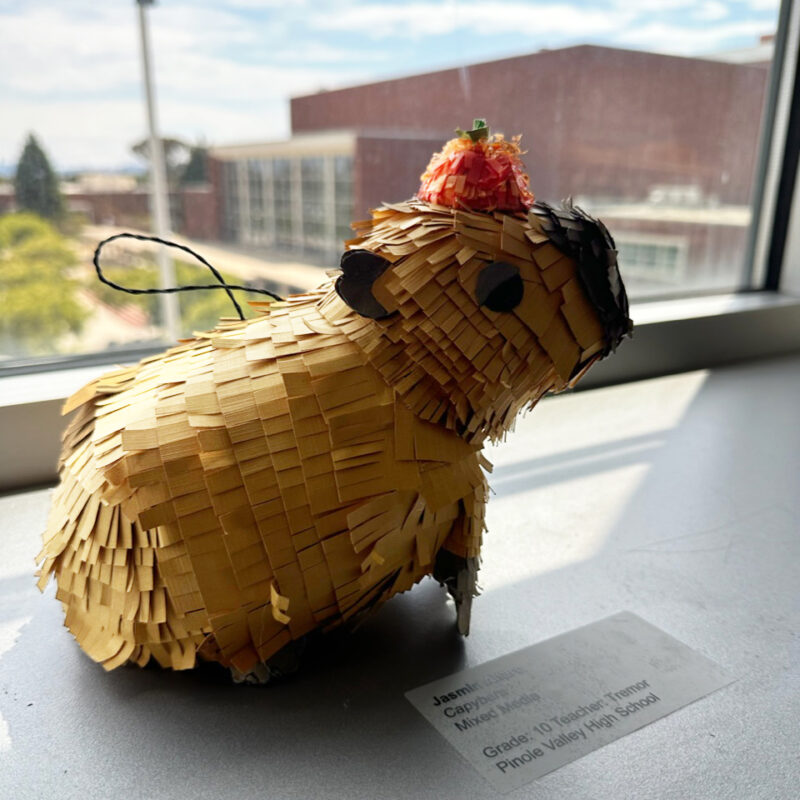
WCCUSD Student Artwork Displayed in Mayor Martinez’s Office Congrats to the students who received Artistic Achievement Awards in the WCCUSD Student Show!! These artists will have their artworks on display in Richmond Mayor Eduardo Martinez’s office at Civic Center Plaza until September 17. Artistic Achievement Awards: Jasmin Alfaro Capybara, Pinole Valley High School; Mario Lopez, Richmond High School; Isabel […]
Artnet News: Chevron Took Down an Artwork, Which Called Out the Oil Giant for Polluting a California City, From a Fence Surrounding Its Refinery
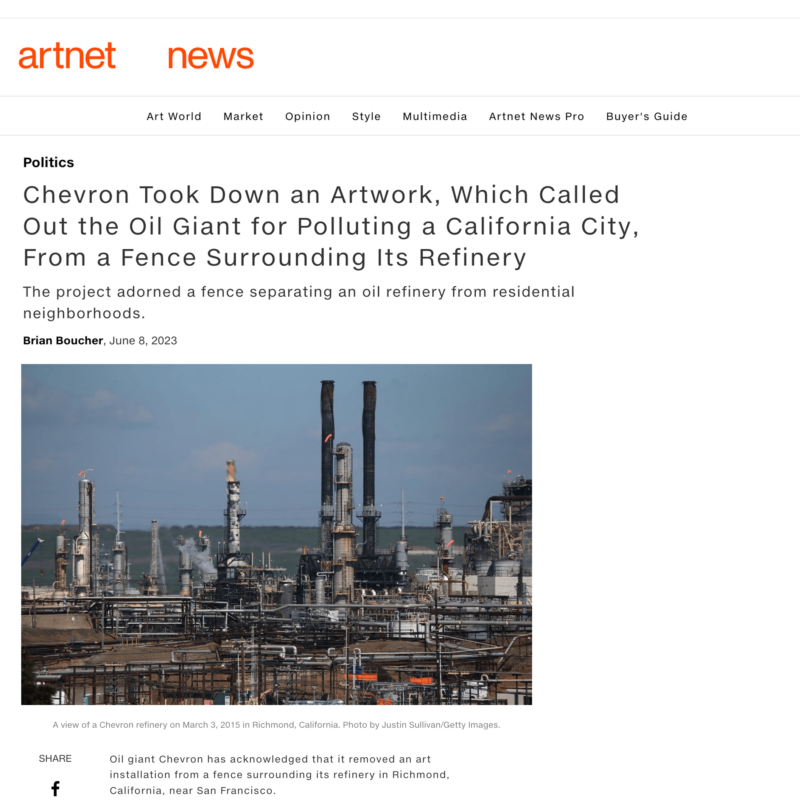
Weblink: https://news.artnet.com/art-world/chevron-removes-public-artwork-pollution-2317611 Artnet News Chevron Took Down an Artwork, Which Called Out the Oil Giant for Polluting a California City, From a Fence Surrounding Its Refinery The project adorned a fence separating an oil refinery from residential neighborhoods. Brian Boucher | June 8, 2023 Oil giant Chevron has acknowledged that it removed an art installation from a […]
ARTnews: ‘They’re Trying to Erase Us’: Chevron Takes Down Public Art Piece
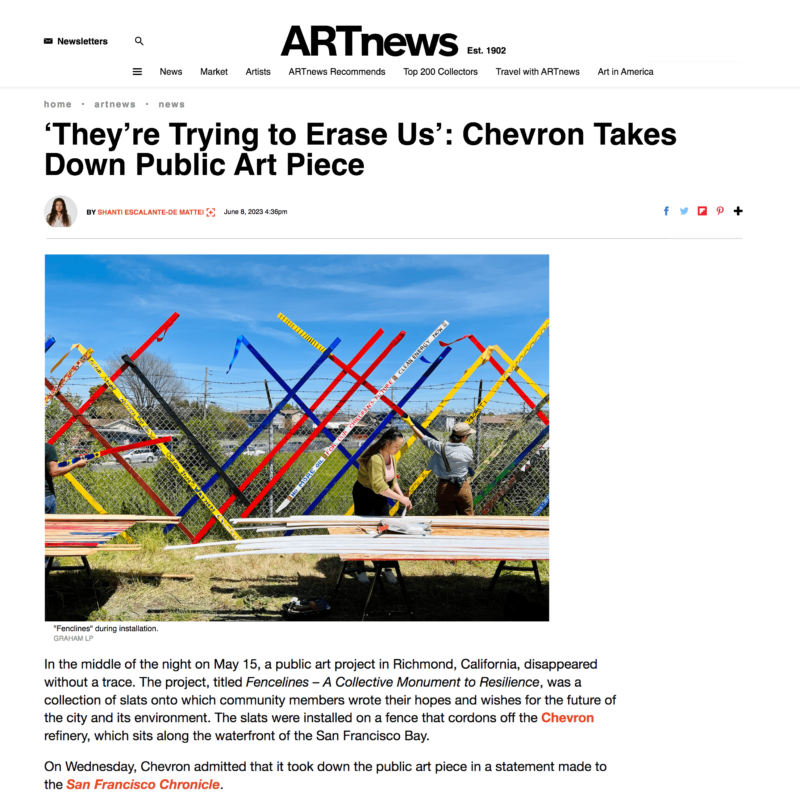
Weblink: https://www.artnews.com/art-news/news/chevron-takes-down-public-art-piece-fencelines-richmond-1234670880/ ARTnews ‘They’re Trying to Erase Us’: Chevron Takes Down Public Art Piece Michael Cabanatuan BY SHANTI ESCALANTE-DE MATTEI | June 8, 2023 4:36pm In the middle of the night on May 15, a public art project in Richmond, California, disappeared without a trace. The project, titled Fencelines – A Collective Monument to Resilience, was a collection […]
San Francisco Chronicle: Chevron admits it took down public art project that criticized the oil giant
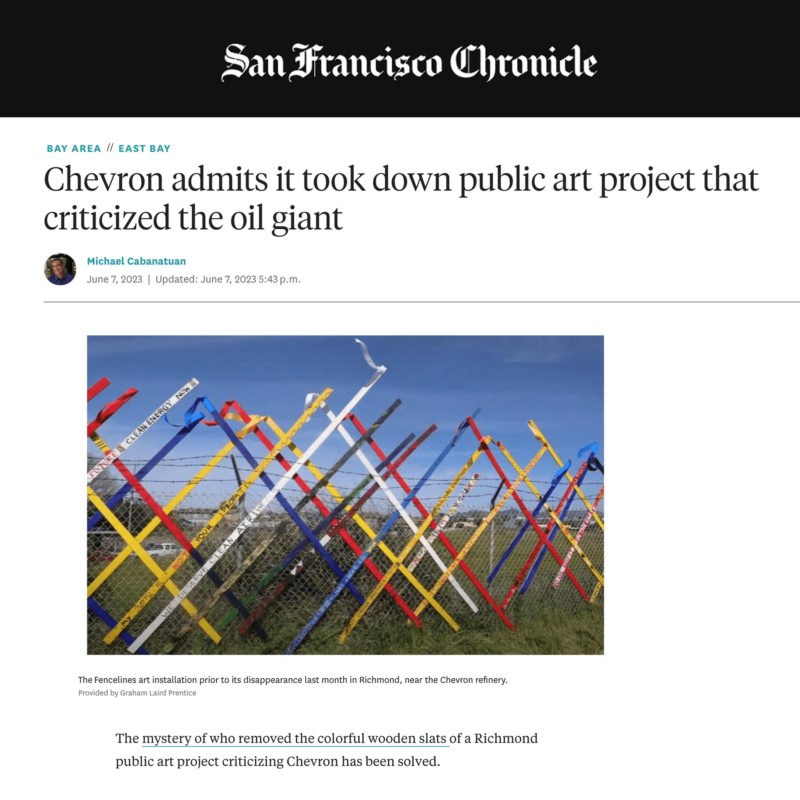
Weblink: https://www.sfchronicle.com/eastbay/article/chevron-admits-took-public-art-project-18140972.php San Francisco Chronicle Chevron admits it took down public art project that criticized the oil giant Michael Cabanatuan | June 7, 2023 The mystery of who removed the colorful wooden slats of a Richmond public art project criticizing Chevron has been solved. It was Chevron, a spokesman for the oil company admitted on Wednesday. Fencelines, […]
San Francisco Chronicle: A huge Bay Area art installation near the Chevron refinery vanished. The artists say it was stolen
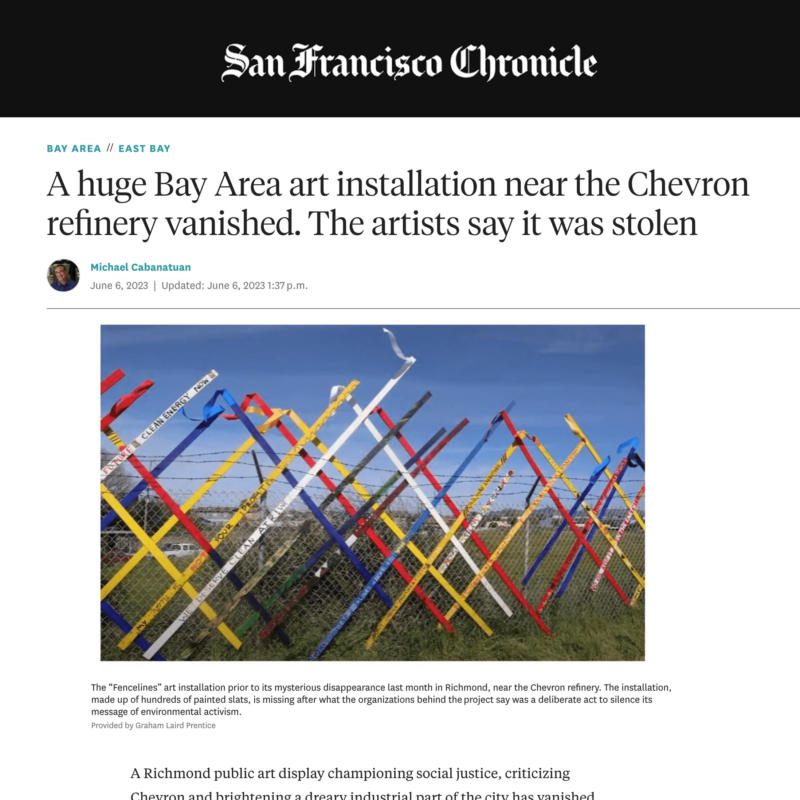
Weblink: https://www.sfchronicle.com/eastbay/article/richmond-chevron-art-installation-missing-18136796.php San Francisco Chronicle A huge Bay Area art installation near the Chevron refinery vanished. The artists say it was stolen Michael Cabanatuan | June 6, 2023 A Richmond public art display championing social justice, criticizing Chevron and brightening a dreary industrial part of the city has vanished weeks before it was scheduled to […]
